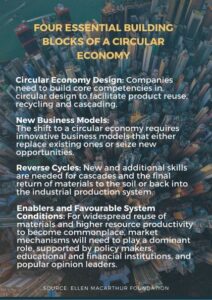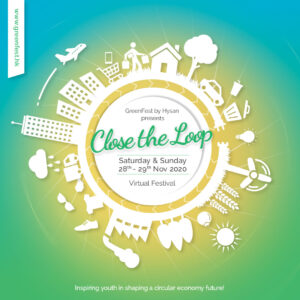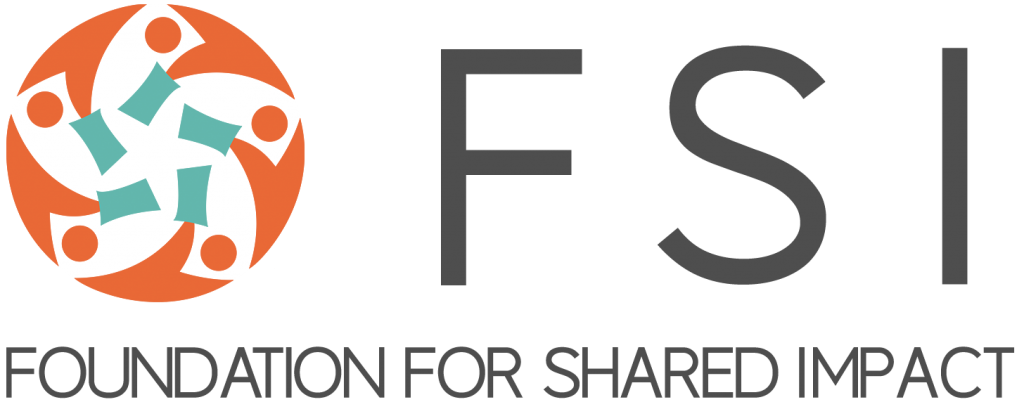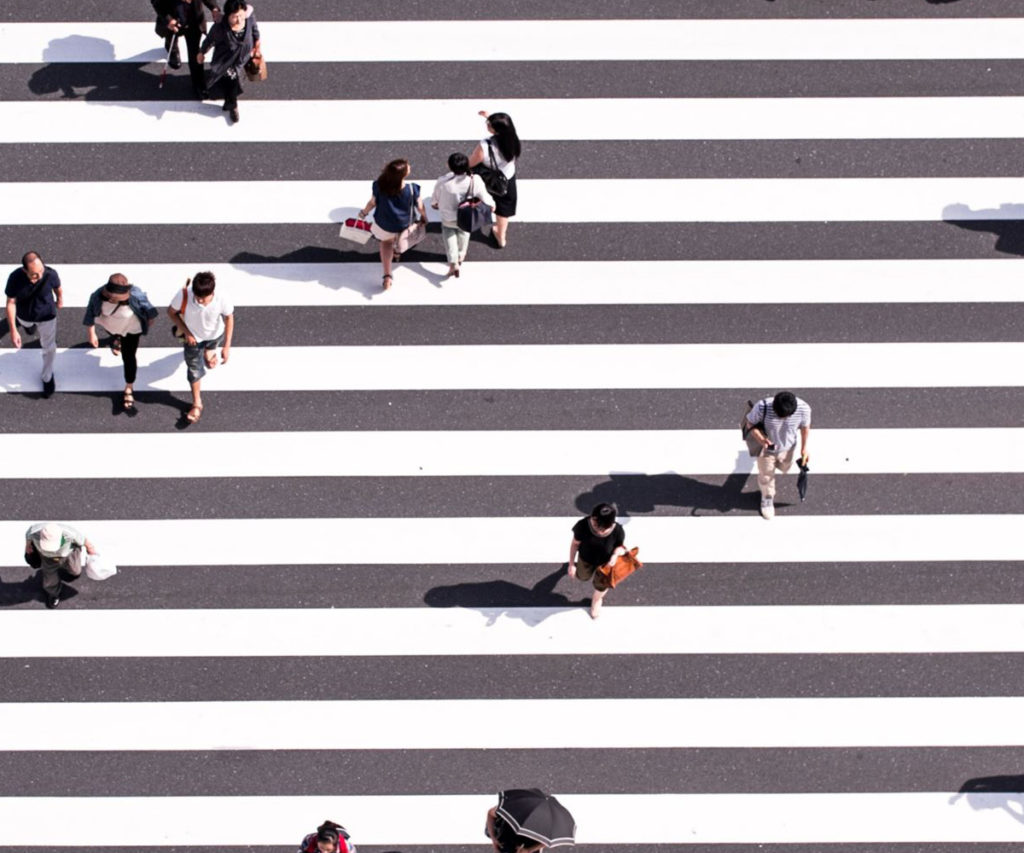Circular Everywhere and Everything
In Part I of this newsletter, we discussed the urgent need to transition from our current linear economic model to a circular one. The good news is that the tide is turning. The study, “Growth Within: A circular economy vision for a competitive Europe”, has found that going circular could generate a net economic gain of EUR1.8 trillion (USD2 trillion) by 2030, which is twice as much than that generated by the current linear economic model. In addition to cutting carbon emissions by half, adopting the principles of a circular economy also has the potential to increase average disposable income for EU households by 11%.
But how do we go about creating an economy that abandons obsolescence and is restorative and regenerative by design? Drawing on its work with organizations that are transitioning towards a circular economy, the Ellen MacArthur Foundation has identified four essential building blocks:

“Cascading” refers to diversifying reuse across the value chain. For example, a cotton T-shirt, free of contaminants, is reused first as second-hand apparel, then as fibre-fill in upholstery, and later, as fibre-fill, reused in stone wool insulation for construction. This cascaded use of materials can eliminate the extraction of virgin materials, and balance the flow of natural resources as the cotton fibres in this case are safely returned to the biosphere.
Source: Towards the Circular Economy, Ellen MacArthur Foundation
From fashion and sneakers, food and agriculture, automobiles to furniture manufacturing, companies of various sizes across different industries are demonstrating that going circular has clear benefits, including resilience from price volatility, cost reduction, competitiveness, job creation, new or better relationship with clients, and increase in revenue, while minimizing negative impact on the environment.
What Makes the World Go Circular?
Circularity is the way to go for the future, as our current linear system of take-make-waste is causing a host of negative impacts such as biodiversity loss, ocean pollution, and climate change, and with that, deterioration in human health, increase in inequalities, and wars and conflicts induced by depleting resources.
From Finland, Denmark, the Netherlands to China, South Africa, and India, countries all over the world are shifting towards the circular economic model. Amsterdam, the capital of the Netherlands, has even teamed up with British economist Kate Raworth to adopt her “Doughnut” economic model for the city’s post-COVID recovery. In essence, the Doughnut economic model is a framework that enables the creation of environmentally safe and socially just cities, where the needs of all can be met without overshooting social and planetary boundaries.
In Hong Kong, keeping materials in use and designing waste out of the system has been central to the vision and mission of social businesses such as Soap Cycling, Redress, and MANA!, long before circular economy became a buzzword. The past few years have seen the circular movement gaining momentum in the business community and civil society, and a strong inclination to change was reflected in the panel discussions at this year’s G.R.E.E.N. Hospitality Conference.

In addition to the four building blocks of a circular economy as proposed by the Ellen MacArthur Foundation, individuals’ behavior change is also crucial to a successful transition. If you are interested in learning more about circularity in various aspects of our life, from fashion to food and city systems, register for this year’s GreenFest by Hysan, and check out their list of speakers and workshop organizers who are offering solutions for the shift towards a circular economy! Open to youth between the ages of 14 and 25, this annual event will be held virtually this year with the theme of “Close the Loop”. As a partner of GreenFest, FSI has 20 tickets to give away. Get your tickets here!



